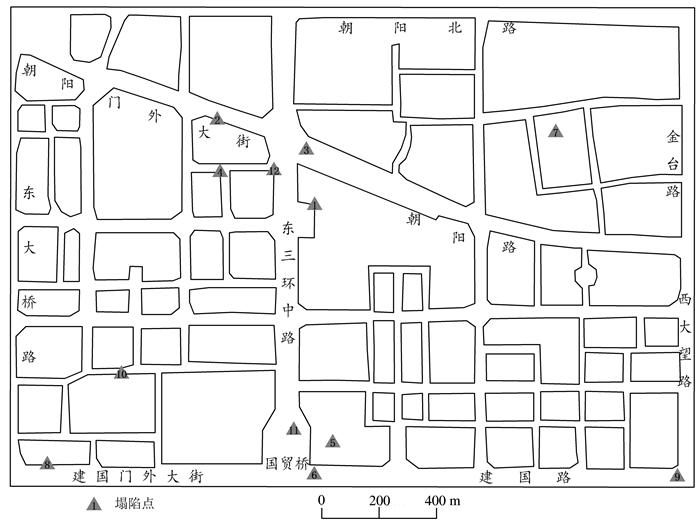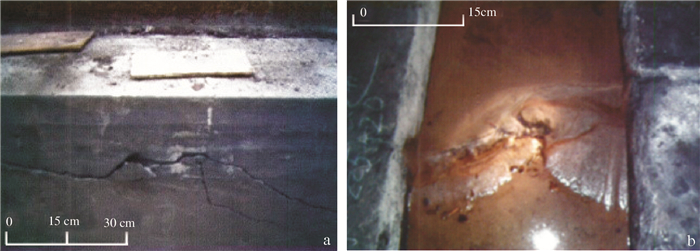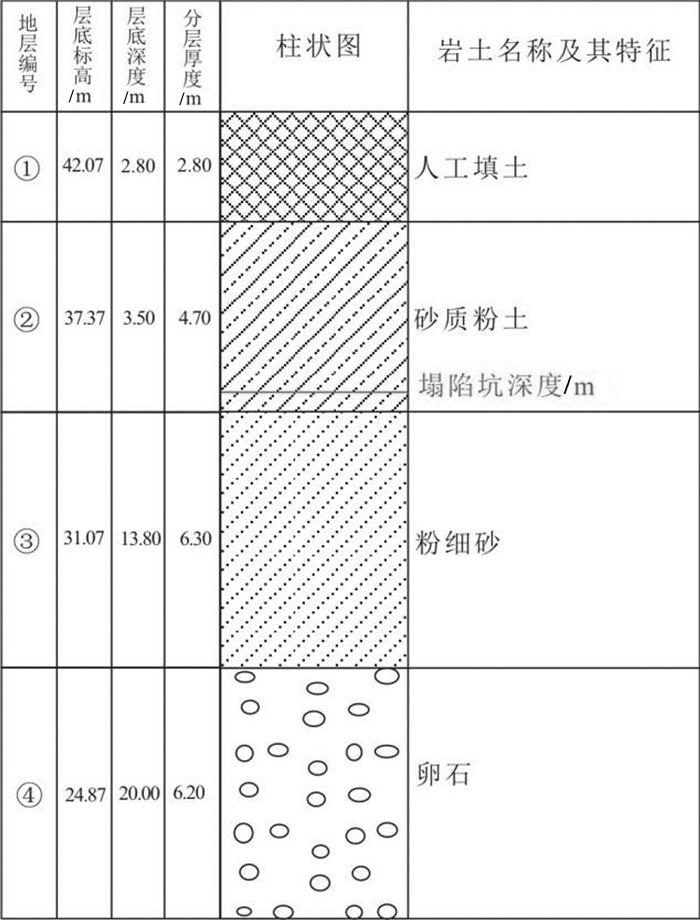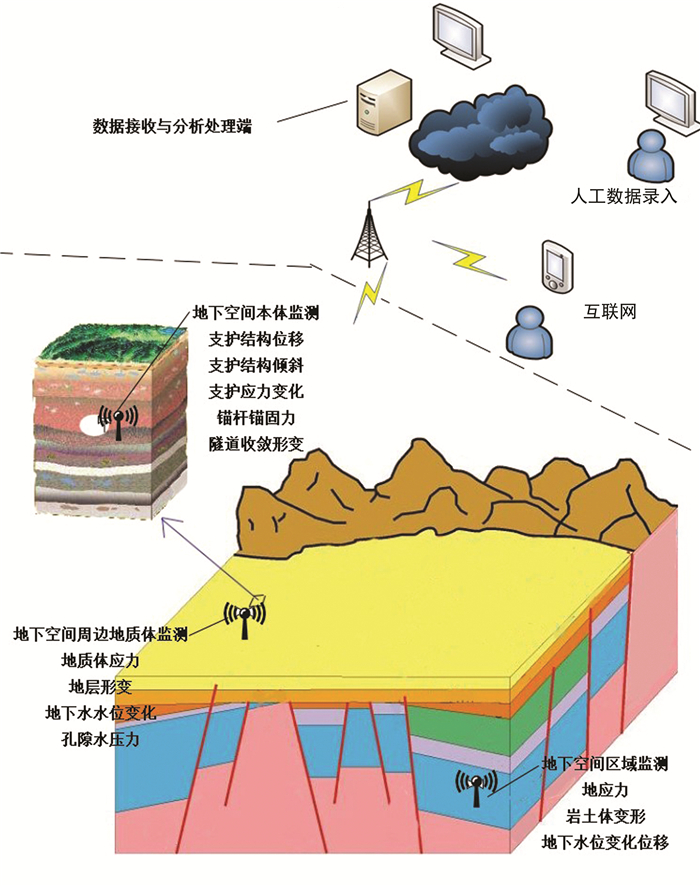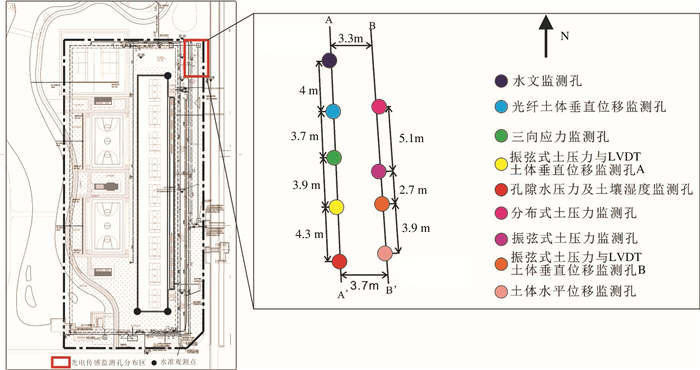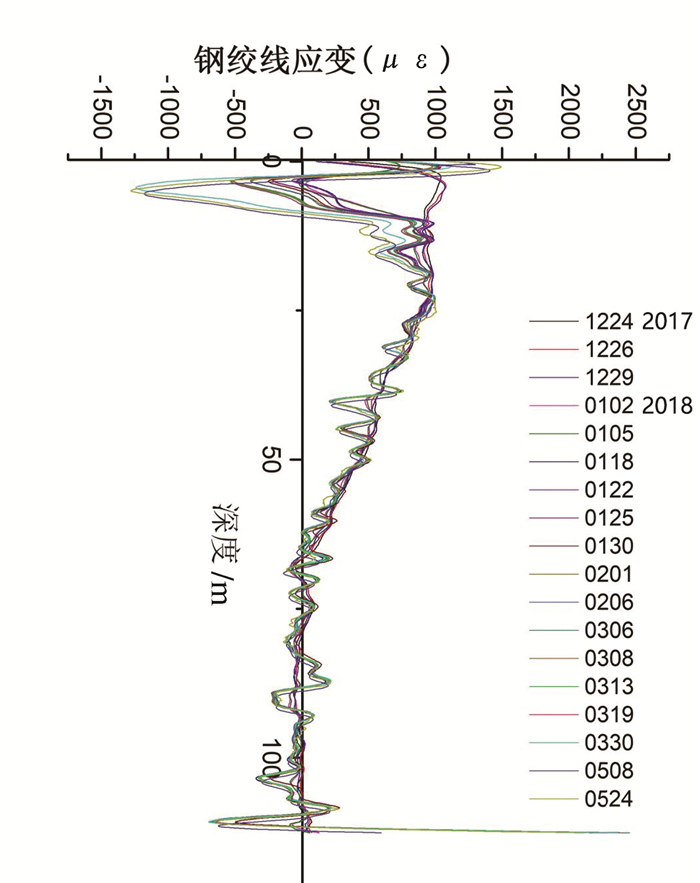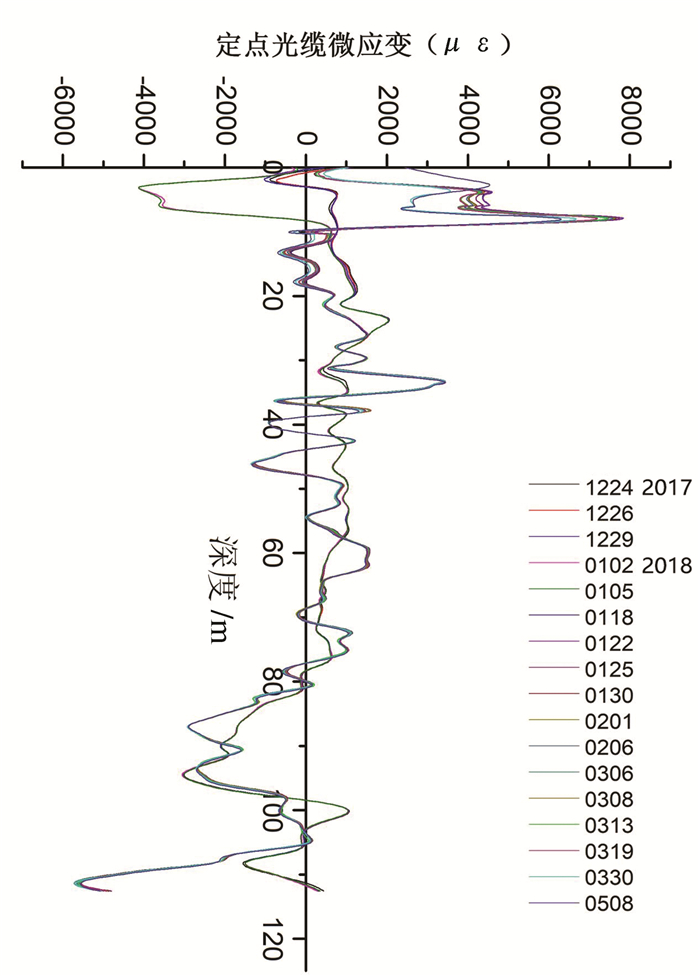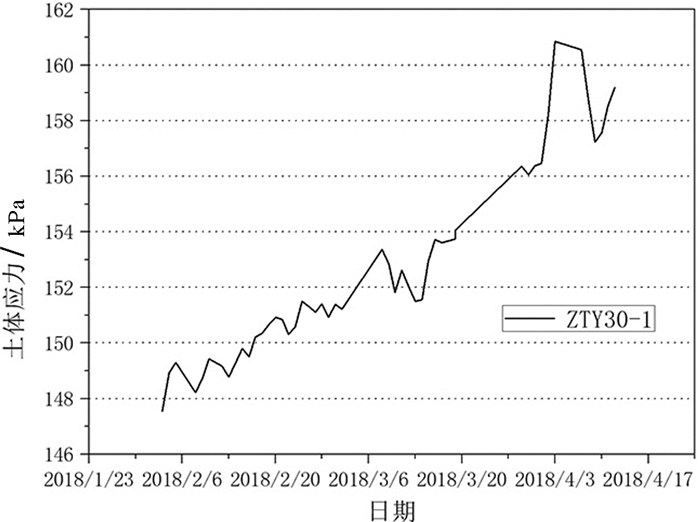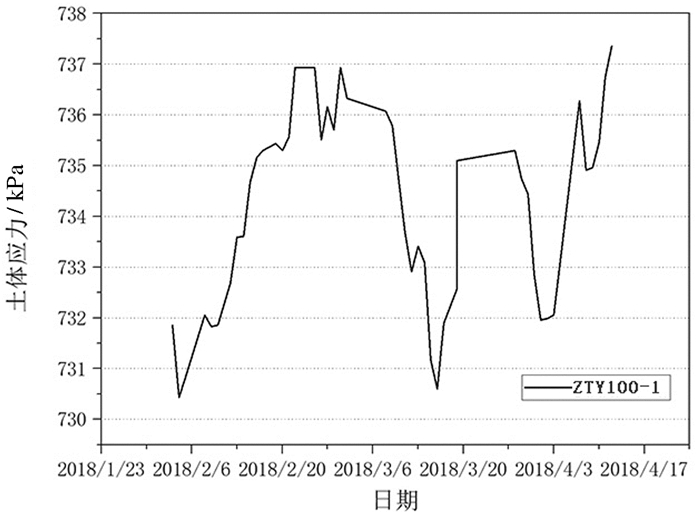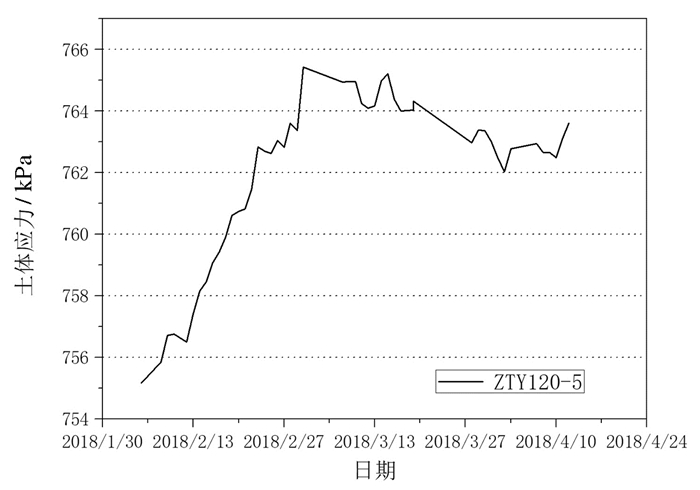Research on geological safety monitoring of urban underground space resource utilization in Beijing
-
摘要:
北京平原区地质条件复杂,冲洪积扇及冲洪积平原相互交织、软弱土体(人工填土、软土)大面积分布,且浅表层地下水流场多变、各类地质灾害发育(活动断裂、地面沉降等),加大了地下空间建设难度,建设完成后易发生各类事故。如软弱土体地层稳定性较差,易发生较大地层形变甚至地面塌陷,破坏地下建(构)筑物结构;地下水水流场的变化,影响地下空间的抗浮稳定性及防渗性,在施工中可能遭遇突涌、施工中断甚至人员伤亡等严重后果;活动断裂产生的三维空间形变,兼具张拉、剪切和扭动的性质,使跨断裂的地下隧道变形,甚至能造成衬砌的断裂;地面沉降发生面积和沉降速率都呈上升的趋势,跨不均匀沉降区建设的地下轨道受沉降影响,出现异常位移或基础破坏等现象。同时,地下空间的建设,对其周边地质环境也会产生作用,产生一系列环境地质问题。如地下空间施工建设措施不当,改变岩土体原有的应力平衡,导致土体位移,产生地表沉降或变形,导致建筑物失稳、甚至破坏;砂质粉土黏粒含量少,饱和状态下受地铁振动易发生液化、流砂;地下管线的渗漏导致地下水受到污染;地下大型线性工程的建设阻断地下水流场,改变地下水环境等。本文拟阐述地质条件对地下空间建设的影响以及地下空间建设可能产生的地质环境问题,从这两个方面出发,提出地下空间建设监测的对象、监测体系及监测方法手段,研究地下空间建成后的地质安全保障。
Abstract:Geological conditions in Beijing plain area are extremely complicated, involving interlaced alluvial-pluvial fan and plain as well as widespread weak soil layers (e.g., made ground, soft soils), which leads to changeable shallow groundwater flow field and various geological hazards such as active faults and land subsidence, thus increasing the difficulty of underground space construction and accident probability. The weak soil layers normally have poor stability, which may cause large degrees of stratigraphic affect the anti-floating stability and impermeability of underground space, and may result in serious damages such as gushes during constructions; the active faults, which can cause three-dimensional spatial deformation with properties of tension, shear and torsion, are likely to deform underground tunnels or even lining fractures; meanwhile, the increasing ground subsidence area and subsidence rate would affect the underground tunnels constructed across the non-uniform subsidence area, and cause abnormal displacement or foundation failure. In addition, a series of geologically related environmental issues may occur during underground development, e. g., groundwater contamination, changes of groundwater flow field, or the liquefaction of sandy powder soils. In this paper, the authors investigated the influence of geological conditions on underground utilization and relevant environmental issues that arise with constructions, and elucidated the monitoring objects, index and methods for underground space development, with the purpose of contributing to geological security insurance for underground space utilization.
-
-
表 1 北京典型地区地面塌陷灾害原因统计
Table 1 Typical reasons for surface collapse in Beiijing City

表 2 监测对象及监测方法
Table 2 Monitoring objects and methods

表 3 监测钻孔设备布设情况
Table 3 Boreholes and related monitoring equipment

-
Bao Yigang, Liu Zhenfeng, Wang Shifa, Huang Renghe, Bai Zhiming, Wang Jiming, Wang Zenghu. 2001. A Centennial Study of Geology in Beijing:History and Latest Achievements of Basic Geological Research in Beijing Area[M]. Beijing:Geological Publishing House (in Chinese).
Bai Lingyan, He Jing, Wang Jiming. 2011. Characteristics of the ground subsidences in Beijing and their causes[J]. Journal of Geological Hazards and Environment Preservation, 22(4):41-45, 49 (in Chinese with English abstract). http://en.cnki.com.cn/Article_en/CJFDTOTAL-DZHB201104009.htm
Beijing Geology Prospecting & Development Bureau, Beijing Institute of Geological Survey. 2008. Urban Geology of Beijing[M]. Beijng:China Land Press (in Chinese).
Beijing Geology Prospecting & Development Bureau. 2007. An Report on Multi-parameter Three-dimensional Geological Survey in Beijing City[R] (in Chinese).
Beijing Institute of Geological Survey.2010. An Research Report on Geological Issues of Construction and Operation Security of Beijing Metro[R] (in Chinese).
Cai Xiangmin, He Jing, Bai Lingyan, Liu Hong. 2010. The Geology Problem in Development and Utilization Programming of Underground Space Resources in Beijing[J]. Chinese Journal of Underground Space and Engineering, 6(6):1105-1111 (in Chinese with English abstract). http://en.cnki.com.cn/Article_en/CJFDTOTAL-BASE201006002.htm
Clayton C, Xu M, Whiter J, Ham A, Rust M. 2010. Stresses in castiron pipes due to seasonal shrink-swell of clay soils[J]. Water Management, Proceedings of the Institution of Civil Engineers, 163(3):157-162. doi: 10.1680/wama.2010.163.3.157
Cui Yi. 2008. Study of Some Key Problems of Civil Engineering in Tianjin No.1 Subway[D]. Tianjin: Tianjin University (in Chinese with English abstract).
Dai Honggui, Zheng Zheng, Yu Gang, Dai Zhixuan, Kong Lingren. 1999. Radon pollution in underground building and tackling countermeasures[J]. Journal of Nanjing University (Natural Sciences), 35 (2):222-229 (in Chinese with English abstract). http://en.cnki.com.cn/Article_en/CJFDTOTAL-NJDZ902.017.htm
Don N C, Araki H, Hang N T M. 2008. Modeling groundwater flow and its associated environmental problem in a lowland coastal plain:A first step towards a sustainable developmenrt plan[J]. Environment, Development and Sustainability, 10(2):219-231. doi: 10.1007/s10668-006-9061-4
Guo Gaoxuan. 2012. Comprehensive assessment of groundwater quality of different aquifers in Beijing Plain[J]. Geology in China, 39(2):518-523 (in Chinese with English abstract). http://cn.bing.com/academic/profile?id=5b44f9076af6b73d3861e5f6999f7bf8&encoded=0&v=paper_preview&mkt=zh-cn
He Jing, He Hanhan, Zheng Guisen, Liu Yu, Zhou Yuanxin, Xiao Jingze, Wang Chunjun.2019.3D geological modelling of superficial deposits in Beijing City[J]. Geology in China, (2):244-254(in Chinese with English abstract). http://d.old.wanfangdata.com.cn/Periodical/zgdizhi201902004
Hiroshi Naruse, Koji Komatsu, Kazuhiko Fujihashi, Masaru Okutsu. 2005. Telecommunications tunnel monitoring system based on distributed optical fiber strain measurement[C]//Proceedings of SPIE, 5855: 168-171.
Hu Jianping. 2005. Discussions on the exploitation of underground space and influence of geological environment in Nanjing City[J]. Jiangsu Geology, (1):46-49 (in Chinese with English abstract). http://cn.bing.com/academic/profile?id=6abfbb44770a2554c6aab24d1f046960&encoded=0&v=paper_preview&mkt=zh-cn
Hyung-Sik Chung, Byung-Sik Chun, Byung-Hong Kim, Yong-Jae Lee. 2006. Measurement and analysis of long-term behavior of seoul metro tunnels using the automatic tunnel monitoring system[C]//Proceedings of the World Tunnel Congress and 32nd ITA Assembly, Seoul, Korea.Journal of Civil Engineering and Management, 29 (1): 61-67.
Jiao Yvhuo. 2014. Effect analysis on underground space development to geological environment in Tai'an City[J]. Shangdong Land and Resources, 30(12):59-62 (in Chinese with English abstract). http://cn.bing.com/academic/profile?id=ae0b98857bdfd490a8878160b89f1c5a&encoded=0&v=paper_preview&mkt=zh-cn
Li Hao.2009. How to solve issues of urban road waterlogging and surface collapse in Beijing[J]. Science & Culture Science-tech Waves, (9):42-43 (in Chinese with English abstract).
Li Huazhang. 1995. Quaternary Palaeogeography in Beijing[M]. Beijing:Geological Publishing House, 1-152 (in Chinese).
Li Husheng. 2008. Current state and prospects of geotechnical engineering safety technology in urban underground space development[J]. Journal of Shanghai Institute of Technology(Natural Science), 8(1):1-8 (in Chinese with English abstract). http://cn.bing.com/academic/profile?id=fdf8e98fcac778f09444d9374234f5cb&encoded=0&v=paper_preview&mkt=zh-cn
Li Peng. 2009. Research on Anti-breaking Structural Design of the Highway Tunnel across Active Fault Zones[D]. Chongqing: Chongqing Jiaotong University (in Chinese with English abstract).
Li Xiaosong, Sun Baowei, Yao Xuchu. 2007. Analysis on the influence of groundwater variation to the safety of undergroundtransportation facilities in Beijing[J]. Urban Transport of China, 5(2):81-85 (in Chinese with English abstract). http://en.cnki.com.cn/Article_en/CJFDTOTAL-CSJT200702018.htm
Liu Jianglong. 2006. The Study on Mechanism of Ground Collapse and its Dangerous Appraisal in Guangzhou[D]. Guangzhou: Guangzhou University (in Chinese with English abstract).
Ma Zhen, Xie Hailan, Lin Liangjun, Hu Qiuyun, Qian Yong, Zhang Surong, Wang Guiling, Li Jianguo, Tan Chengxuan, Guo Haipeng, Zhang Fucun, Zhao Changrong, Liu Hongwei.2017.The environmental geological conditions of Land resources in the Beijing-Tianjin-Hebei region[J].Geology in China, 44(5):857-873(in Chinese with English abstract).
Netzel H, Kaalberg F J. 1999. Numerical risk assessment studies for masonry structures due to TBM tunnelling in Amsterdam[C]//Proceedings of Underground Construction in Soft ground, Tokyo, Japan.
Phienwej N, Giao P H, Nutalaya P. 1998. Field experiment of artificial recharge through a well with reference to land subsidence control[J]. Environmental Geology, 50(1/2):187-201. http://cn.bing.com/academic/profile?id=2caa731d5e2ca888355c5058df4449b0&encoded=0&v=paper_preview&mkt=zh-cn
Shi Xiaodong. 2006. History and future of underground space development and utilization in Beijing[J]. Chinese Journal of Underground Space and Engineering, 2(7):1088-1092 (in Chinese with English abstract). http://cn.bing.com/academic/profile?id=323f0ae75a8d30b45a19dc88368e0d67&encoded=0&v=paper_preview&mkt=zh-cn
Song Minsheng, Zhu Renjun. 1993. Discussion on several issues in shield construction[J]. Construction Mechanization, (3):2-5 (in Chinese with English abstract).
Wei Wanshun. 2010. Study on the key geological problems during Beijing constructing to a Global City[J]. Urban Geolgoy, 5(3):1-7(in Chinese with English abstract). http://en.cnki.com.cn/Article_en/CJFDTOTAL-CSDZ201003002.htm
Xie Dongsheng, Qian Qihu, Rong Xiaoli. 2012. Risk management in rail transit construction[J]. Journal of Civil Engineering and Management, 29 (1):61-67(in Chinese with English abstract). http://d.old.wanfangdata.com.cn/Periodical/dskgjt201806006
Xie Yuping. 1994. Quaternary Geology and Geomorphology[M]. Beijing:Geological Publishing House, 42-58 (in Chinese).
Yan Xuexin, Gong Shiliang, Zeng Zhengqiang, Yu Junying, Shen Guoping, Wang Tiejun. 2002. Relationship between building density and land subsidence in Shanghai urban zone[J]. Hydrogeology and Engineering Geology, 29(6):21-25 (in Chinese with English abstract). http://cn.bing.com/academic/profile?id=ea4d97c0ed8944a099bb3a85f631a0e7&encoded=0&v=paper_preview&mkt=zh-cn
Zhang Zhuoyuan, Wang Shitian, Wang Lansheng, Huang Runqiu, Xu Qiang, Tao Lianjin. 2009. Analysis Principles of Engineering Geoloy[M].Beijing:Geological Publishing House (in Chinese).
Zhao Zhigang, Zhao Lianheng, Li Liang, Deng Dongping. 2012. Upper bound stability analysis for parallel bedding rock slope subjected to water level fluctuations[J]. Journal of Railway Science and Engineering, 9(3):51-57 (in Chinese with English abstract). http://cn.bing.com/academic/profile?id=654115aea92aad42acd3ed257f441554&encoded=0&v=paper_preview&mkt=zh-cn
Zheng Shengbao, Jiang Shuping, Li Peng. 2013. The damage characteristics and protection methods of tunnel cross active fault zone[J]. Highway Engineering, 38(4):25-28, 33 (in Chinese). http://cn.bing.com/academic/profile?id=0063102e85c74f43b809e60316991120&encoded=0&v=paper_preview&mkt=zh-cn
鲍亦冈, 刘振锋, 王世发, 黄礽河, 白志民, 王继明, 王增护. 2001.北京地质百年研究[M].北京:地质出版社. 白凌燕, 何静, 王继明.2011.北京市地面塌陷特征与致灾因子分析[J].地质灾害与环境保护, 22(4):41-45+49. doi: 10.3969/j.issn.1006-4362.2011.04.007 北京市地质矿产勘查开发局、北京市地质调查研究院. 2008.北京城市地质[M].北京:中国大地出版社. 北京市地质矿产勘查开发局. 2007.北京市多参数立体地质调查报告[R].北京. 北京市地质调查研究院. 2010.北京地铁建设及运行安全的地质问题研究报告[R].北京. 蔡向民, 何静, 白凌燕, 刘鸿.2010.北京市地下空间资源开发利用规划的地质问题[J].地下空间与工程学报, 6(6):1105-1111. http://d.old.wanfangdata.com.cn/Periodical/dxkj201006001 崔奕. 2008.天津地铁一号线土建工程关键技术问题研究[D].天津: 天津大学. http://www.wanfangdata.com.cn/details/detail.do?_type=degree&id=Y1531772 戴鸿贵, 郑正, 余刚, 戴志轩, 孔令仁. 1999.地下工程中的氡异常及其治理对策[J].南京大学学报(自然科学), 35 (2):222-229. http://www.cnki.com.cn/Article/CJFDTotal-NJDZ902.017.htm 郭高轩.2012.北京市平原区地下水分层质量评价[J].中国地质, 39(2):518-523. doi: 10.3969/j.issn.1000-3657.2012.02.022 何静, 何晗晗, 郑桂森, 刘予, 周圆心, 肖景泽, 王纯君.2019.北京五环城区浅部沉积层的三维地质结构建模[J].中国地质, (2):244-254. http://geochina.cgs.gov.cn/geochina/ch/reader/view_abstract.aspx?file_no=20190203&flag=1 胡建平.2005.南京市地下空间开发与地质环境效应初探[J].江苏地质, (1):46-49. http://d.old.wanfangdata.com.cn/Periodical/jsdz200501011 焦玉国.2014.泰安市城区地下空间开发与环境地质影响关系分析[J].山东国土资源, 30(12):59-62. doi: 10.3969/j.issn.1672-6979.2014.12.018 李胡生. 2008.城市地下空间岩土工程安全技术现状与展望[J].上海应用技术学院学报, 8(1):1-8. doi: 10.3969/j.issn.1671-7333.2008.01.001 李华章. 1995.北京地区第四纪古地理研究[M].北京:地质出版社, 1-152. 李鹏. 2009.活动断层区公路隧道抗错断结构设计的研究[D].重庆: 重庆交通大学. http://cdmd.cnki.com.cn/Article/CDMD-10618-2009123807.htm 李晓松, 孙保卫, 姚旭初. 2007.北京市地下水环境变化对地下交通设施安全的影响分析[J].城市交通, 5(2):81-85. doi: 10.3969/j.issn.1672-5328.2007.02.016 李皓.2009.北京应如何解决道路积水与路面塌陷的难题[J].科技潮, (9):42-43. http://d.old.wanfangdata.com.cn/Periodical/kjc200909017 刘江龙.2006.广州市地面塌陷成灾机制与危险性评价[D].广州: 广州大学. http://cdmd.cnki.com.cn/Article/CDMD-11078-2006116782.htm 马震, 谢海澜, 林良俊, 胡秋韵, 钱永, 张素荣, 王贵玲, 李建国, 谭成轩, 郭海朋, 张福存, 赵长荣, 刘宏伟.2017.京津冀地区国土资源环境地质条件分析[J].中国地质, 44(5):857-873. http://geochina.cgs.gov.cn/geochina/ch/reader/view_abstract.aspx?file_no=20170503&flag=1 石晓冬. 2006.北京城市地下空间开发利用的历程与未来[J].地下空间与工程学报, 2(7):1088-1092. http://d.old.wanfangdata.com.cn/Periodical/dxkj2006z1003 宋敏生, 祝人骏. 1993.盾构施工中几个问题的探讨[J].工程施工, (3):2-5. http://www.cnki.com.cn/Article/CJFDTotal-JZJH199303000.htm 卫万顺.2010.北京建设世界城市亟需解决的关键地质问题[J].城市地质, 5(3):1-7. doi: 10.3969/j.issn.1007-1903.2010.03.001 解东升, 钱七虎, 戎晓力. 2012.地铁工程建设安全风险管理研究[J].土木工程与管理学报, 29 (1):61-67. doi: 10.3969/j.issn.2095-0985.2012.01.014 谢宇平. 1994.第四纪地质学及地貌学[M].北京:地质出版社, 42-58. 严学新, 龚士良, 曾正强, 俞俊英, 沈国平, 汪铁骏. 2002.上海城区建筑密度与地面沉降关系分析[J].水文地质工程地质, 29(6):21-25. doi: 10.3969/j.issn.1000-3665.2002.06.006 张倬元, 王士天, 王兰生, 黄润秋, 许强, 陶连金. 2009.工程地质分析原理[M].北京:地质出版社. 赵志刚, 赵炼恒, 李亮, 邓东平.2012.水位升降对顺层岩坡稳定性影响的上限分析方法[J].铁道科学与工程学报, 9(3):51-57. doi: 10.3969/j.issn.1672-7029.2012.03.009 郑升宝, 蒋树屏, 李鹏.2013.活动断层区隧道破坏特点及应对方法[J].公路工程, 38(4):25-28+33. http://d.old.wanfangdata.com.cn/Periodical/znglgc201304007




 下载:
下载:

